The life of the mold is naturally related to the quality of the steel. But if used improperly, even the best steel can not guarantee a good life. From heat treatment to die casting production, temperature (heat) is one of the determining factors for the life of a die-casting mold.
First, heat treatment temperature and materials
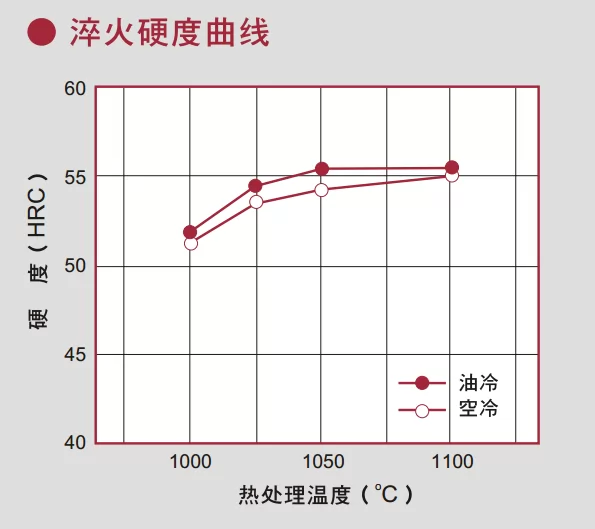
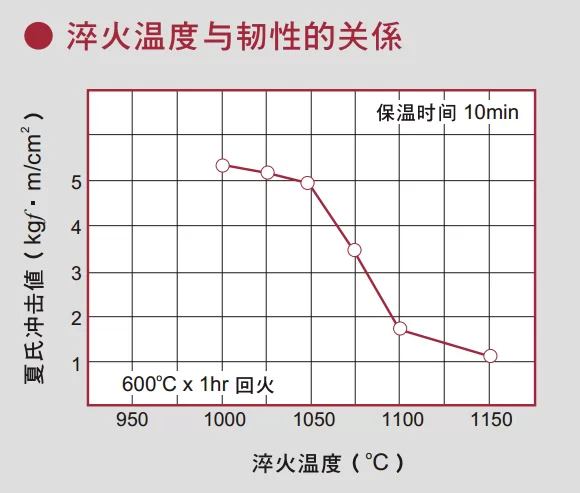
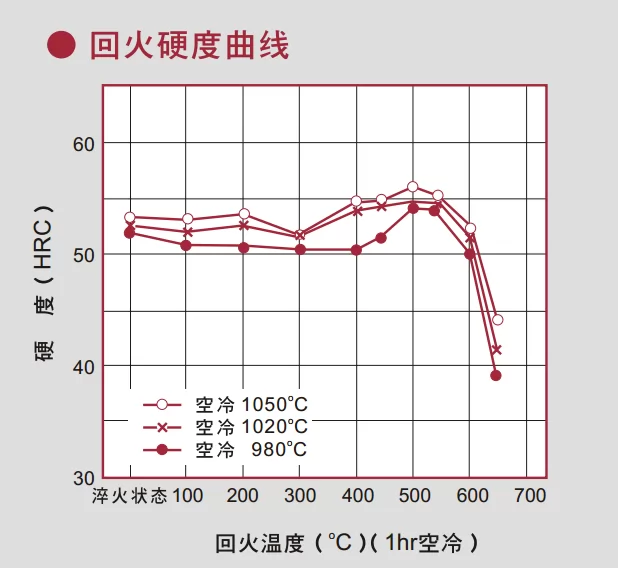
As can be seen from the above graph, the higher the material hardness is, the higher the quenching temperature is, and the lower the toughness, the lower the tempering temperature.
One of the important effects of tempering is to eliminate the residual stress in the hardened steel. The higher the tempering temperature, the more complete the quenching stress is removed and the plasticity of the steel increases. Of course, the hardness of the hardened steel will also decrease. Therefore, when determining the hardness of the mold material, do not just consider the hardness requirements to the highest to prevent erosion. Instead, the stress of the mold structure should be fully considered, and the appropriate hardness value should be reduced according to the actual situation. Because erosion can also be solved by a series of methods such as surface nitriding, coating, improving the casting system, and adjusting the die casting process. Conversely, if the stress is concentrated, the damage caused by the mold cracking prematurely will be greater.
Second, temperature and material structure
When a steel material is produced by heat treatment or die-casting, a workpiece having a sharply changed cross section or a workpiece having a sharp notch is prone to quench cracking.
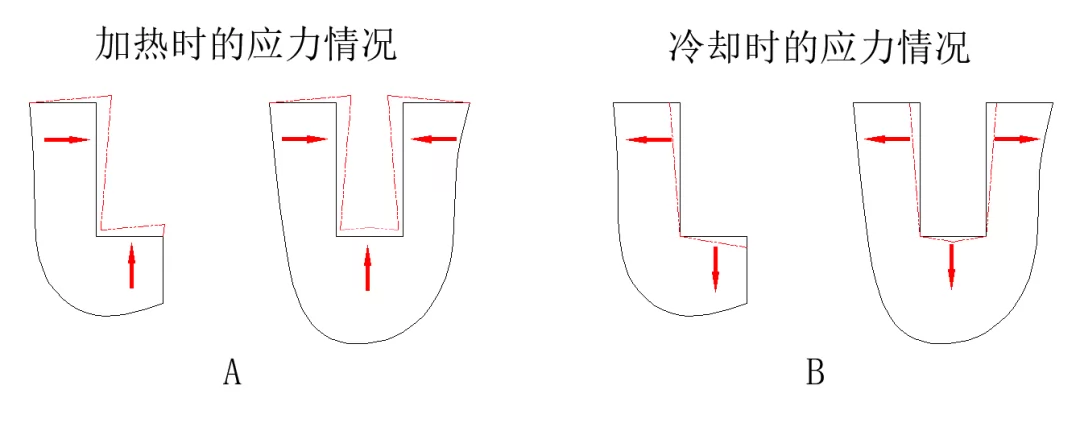
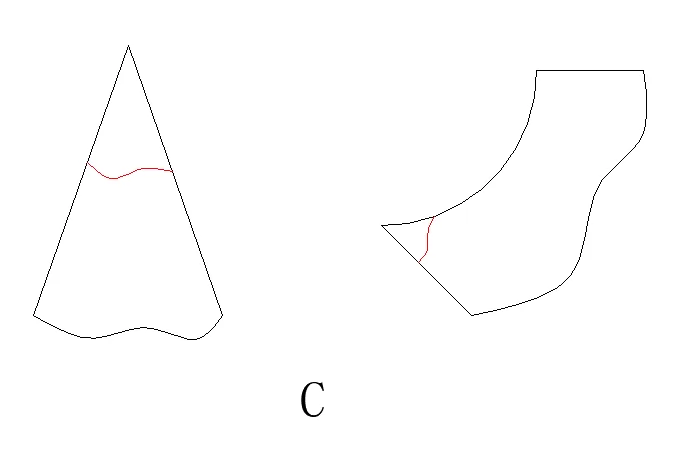
The heat treatment process is carried out by heating and cooling. The size and shape of the workpiece will inevitably affect the condition of heating and cooling and cooling. Stress concentration is easily caused at the notch of the workpiece, and the stress value at the notch is often several times the average stress value at other sections. The smaller the fillet radius at the notch, the more severe the stress concentration (eg, A and B). It is also the place where stress concentration is most likely to occur at sharp corners (such as C).
Stress concentration areas can significantly reduce the ductility of steel. It is more likely to cause cracking and cause early fatigue breakage.
This situation occurs in the mold structure, which is generally caused by the product structure. Therefore, in the initial stage of product design, we must seriously consider how to avoid or reduce the occurrence of stress.
The process of die-casting production is also the process of letting the material undergo repeated repeated heating and cooling and cooling. If the temperature difference between the heat-increasing and cooling-heating is greater, the earlier the stress concentration occurs, the cracking and fatigue breaking occur.
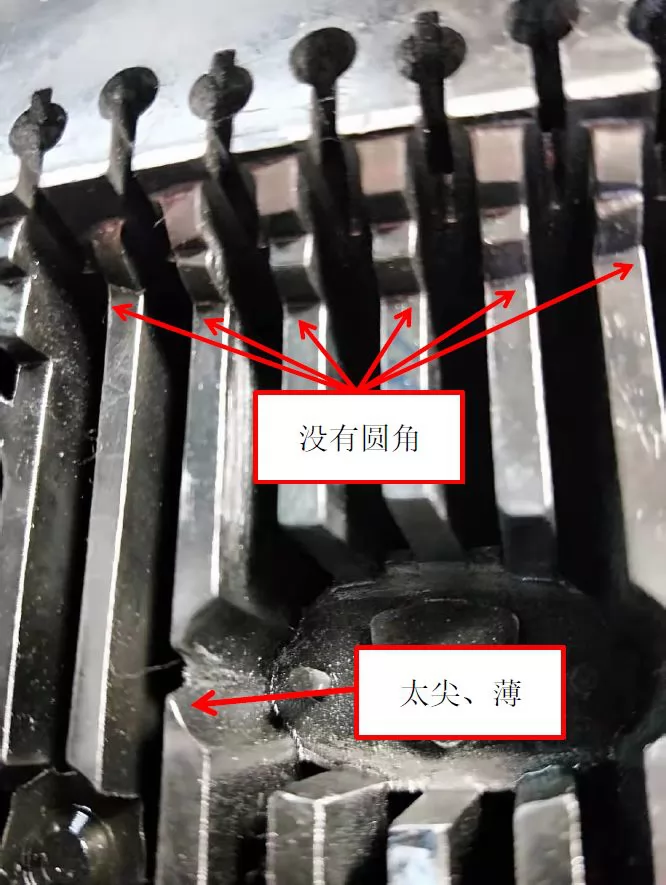
Due to the stress concentration, cracks occur in the die casting 200.
Third, temperature and material properties
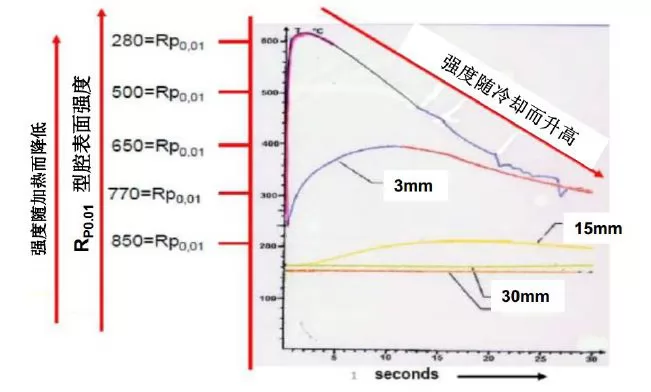
As shown in the above figure, the thermal strength of the material decreases with increasing temperature, and reaches a critical value, which is a sharp drop.
In production, the increase in temperature is mainly due to the heat of the die-casting liquid and the heat energy converted into kinetic energy. Therefore, if the temperature of the feed liquid is too high and the filling speed is too fast, the thermal strength of the surface of the cavity will be lowered. Thereby, the erosion, sticking, cracking and the like of the material are accelerated to cause the mold to fail. Therefore, under the premise of ensuring the quality of die-casting products, it is an effective method to prolong the life of the mold by using relatively low temperature liquid and slow filling.
High quality steel is a prerequisite for the life of the mold. Reasonable part structure and design of the gating system are necessary to ensure the life of the mold.
Structural design should consider minimizing or reducing stress generation. Then, it is completely or completely eliminated by tempering by heat treatment. The design of the gating system should reduce the resistance during production by controlling the filling and draining. Fill with a relatively low temperature feed and slow speed.
The reduction of impact kinetic energy during die casting production will reduce heat generation, reduce the temperature rise of the mold surface, and improve the working environment of the material, which is essential for maintaining the thermal strength of the material. Therefore, the design of the feed and discharge system (ie the design of the gating system) is also a temperature control technique. Not to mention the heat treatment technology. This shows how important temperature control is to the application of the material (die life)!
Copyright statement: The content of the article is extracted from the network. If there is any infringement, please contact us to delete it!







.png)


.png) +86-574-83036520
+86-574-83036520 +86-574-83008051
+86-574-83008051 sales@innovaw.com
sales@innovaw.com

.png)

.png)
.png)
.png)

.png)
.png)
.png)















.png)

